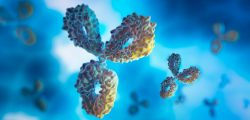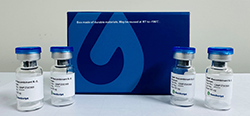Figure 1. α-CGRP induced concentration-dependent stimulation of intracellular calcium mobilization in CHO-K1/Gα15/AMY1 and CHO-K1/Gα15 cells. The cells were loaded with Calcium-4 prior to stimulation with agonist α-CGRP. The intracellular calcium change was measured by FLIPR. The fluorescence signal were normalized and plotted against the log of the cumulative doses (5-fold dilution) of α-CGRP (Mean ± SD, n = 4). The EC50 of α-CGRP on this cell was 58.8 nM.
Notes:
1. EC50 value is calculated with four parameter logistic equation:
Y=Bottom + (Top-Bottom)/(1+10^((LogEC50-X)*HillSlope))
X is the logarithm of concentration. Y is the response
Y is RFU and starts at Bottom and goes to Top with a sigmoid shape.
2. Signal to background Ratio (S/B) = Top/Bottom

CHO-K1/Gα15/AMY1 Stable Cell Line
| M00557 | |
|
|
|
| 询价 | |
|
|
|
|
|
|
| 联系我们 | |



































